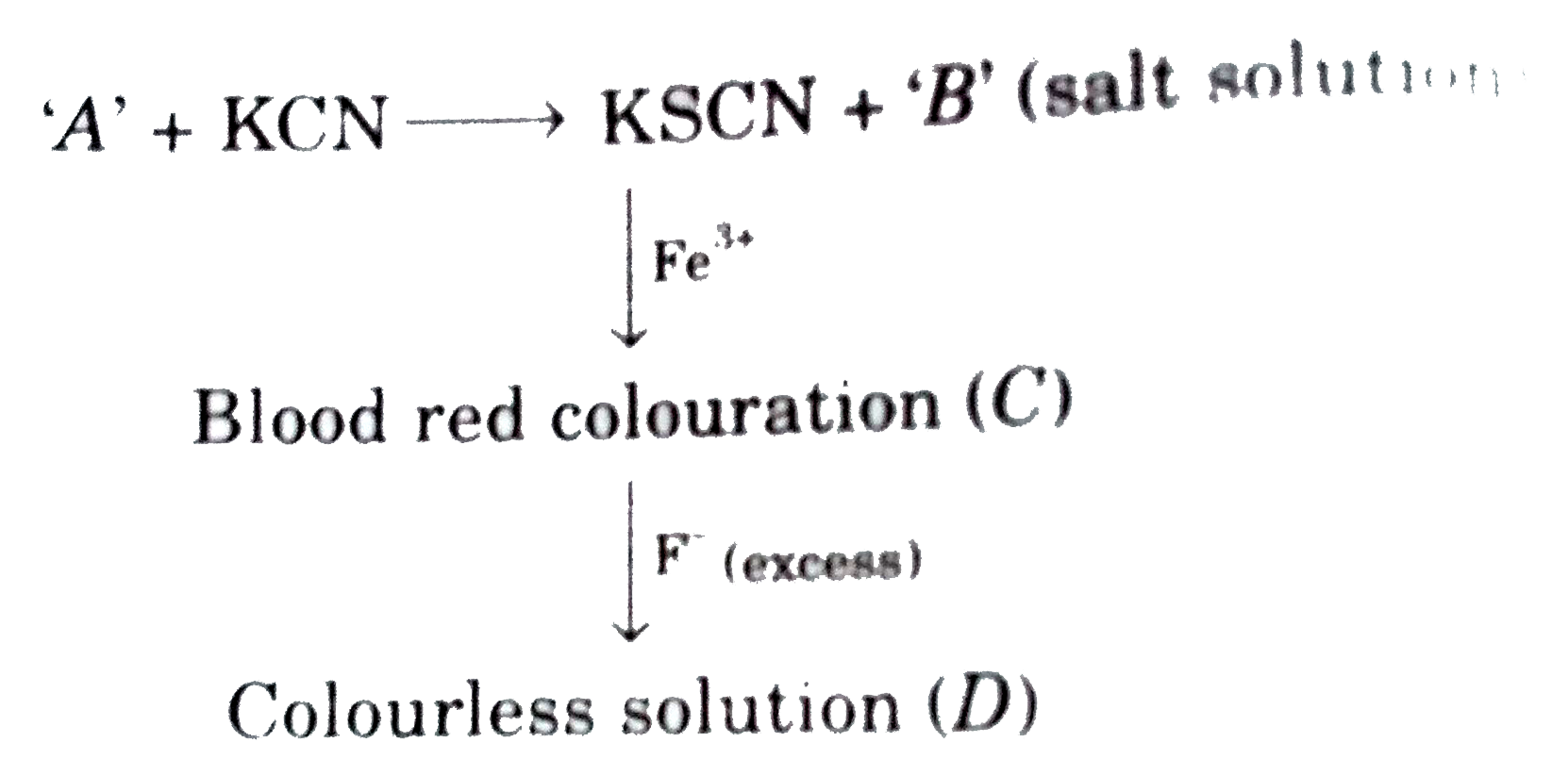
The colourless solution of 'D' contains:
[FeF6]3−
[Fe(H2O)5(SCN)]2+
[Fe(H2O6)]3+
FeS4O6
The correct Answer is:A
Topper's Solved these Questions
- SALT ANALYSISBOOK - GRB PUBLICATIONCHAPTER - SALT ANALYSISEXERCISE - Comprehension 2
1 Videos
- SALT ANALYSISBOOK - GRB PUBLICATIONCHAPTER - SALT ANALYSISEXERCISE - Comprehension 3
1 Videos
- SALT ANALYSISBOOK - GRB PUBLICATIONCHAPTER - SALT ANALYSISEXERCISE - Comprehension 1
1 Videos
- S BLOCK ELEMENTSBOOK - GRB PUBLICATIONCHAPTER - S BLOCK ELEMENTSEXERCISE - SUBJECTIVE TYPE
9 Videos
- THERMODYNAMICSBOOK - GRB PUBLICATIONCHAPTER - THERMODYNAMICSEXERCISE - All Questions
704 Videos
Similar Questions
Two platinum electrodes were immersed in a solution of CuSO4 and electric current was passed through the solution. After some time, it was found that colour of CuSO4 disappeared with evolution of gas at the electrode. The colourless solution contains.
View SolutionTwo platinum electrodes were immersed in a solution of CuSO4 and electric current was passed through the solution. After some time, it was found that colour of CuSO4 disappeared with evolution of gas at the electrode. The colourless solution contains.
View Solution
Knowledge Check
t passed through the solution. After sometimes it was found that the colour of copper sulphate disappeared with evolution of gas at the electrode. The colourless solution contains
Aplatinum sulphateBcopper hydroxideCcopper sulphateDsulphuric acid.Two platinum electrodes were immersed in a solution of CuSO4 and electric current was passed through the solution. After some time, it was found that colour of CuSO4 disappeared with evolution of gas at the electrode. The colourless solution contains.
APlatinum sulphateBCopper hydroxideCCopper sulphateDSulphuric acidTwo platinum electrodes were immersed in a solution of CuSO4 and electric current was passed through the solution. After some time, it was found that colour of CuSO4 disappeared with evolution of gas at the electrode. The colourless solution contains.
ACopper sulphateBcopper hydroxideCplatinum sulphateDsulphuric acid
A colourless solution is known to contain one of these ions. Which ion is present if adding dilute HCI produces a white precipiate that dissolves when the solution is warmed?
View Solutioni) A black mineral (A) on treatment with dilute sodium cyanide of (B) and (C ).
ii) The solution of (B) on reaction with zinc gives precipitate of a metal (D).
iii) (D) is dissolved in dil. HNO3 and the resulting solution gives a white precipitate (E) with dil. HCl.
iv) (E) on fusion with sodium carbonate gives (D).
v) (E) dissolves in aqueous solution ammonia giveing a colourless solution (F).
The colourless solution of (F) is
View SolutionThe aqueous solution of D-glucose contains two forms of D-glucopyranose, which are :
View SolutionSuppose you have four test tubes labelled as 'A' , 'B' , 'C' and 'D' ,'A' contains plain water 'B' contains solution of an alkali 'C' contains solution of and 'D' contains solution of sodium chloride which one of these solutin will turn phenoplhthalein solution pink ?
View SolutionA colourless solution contains a metal nitrate. A little solution of sodium chloride is added to it when a cloudy white precipitate appears. The precipitate is of
View Solution
